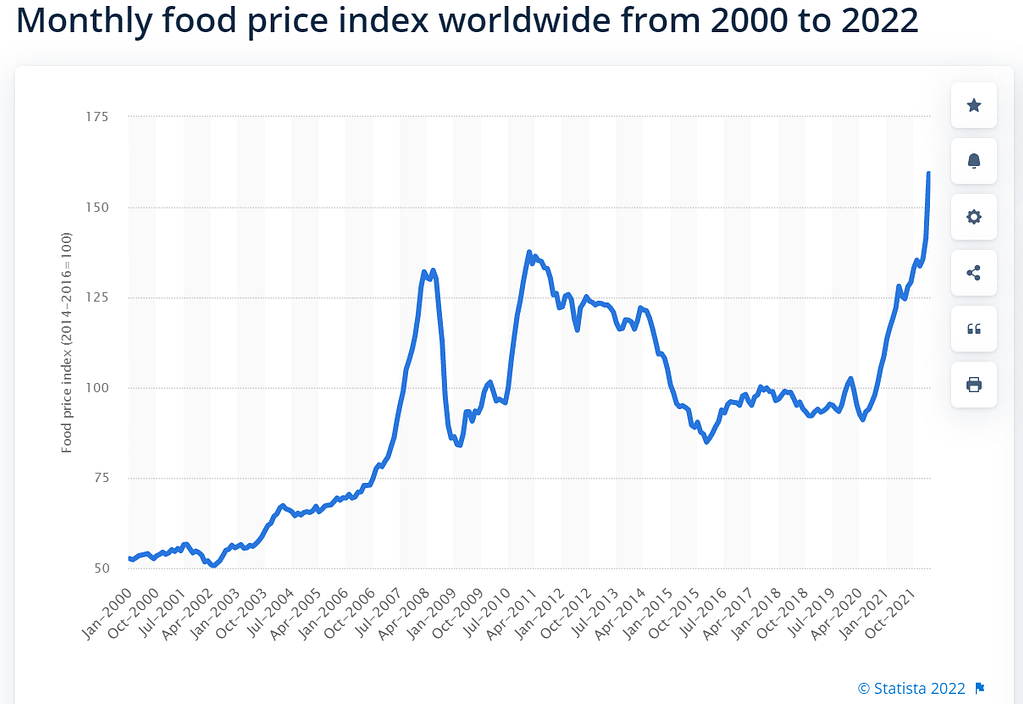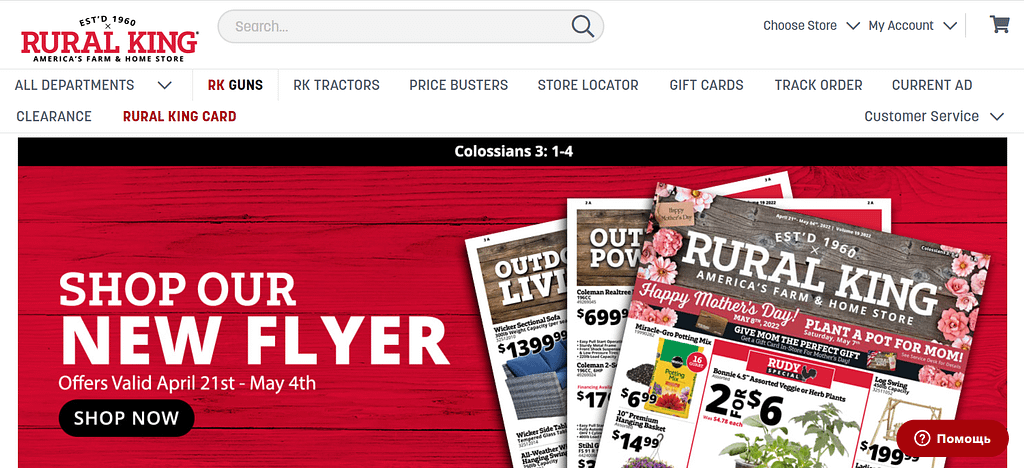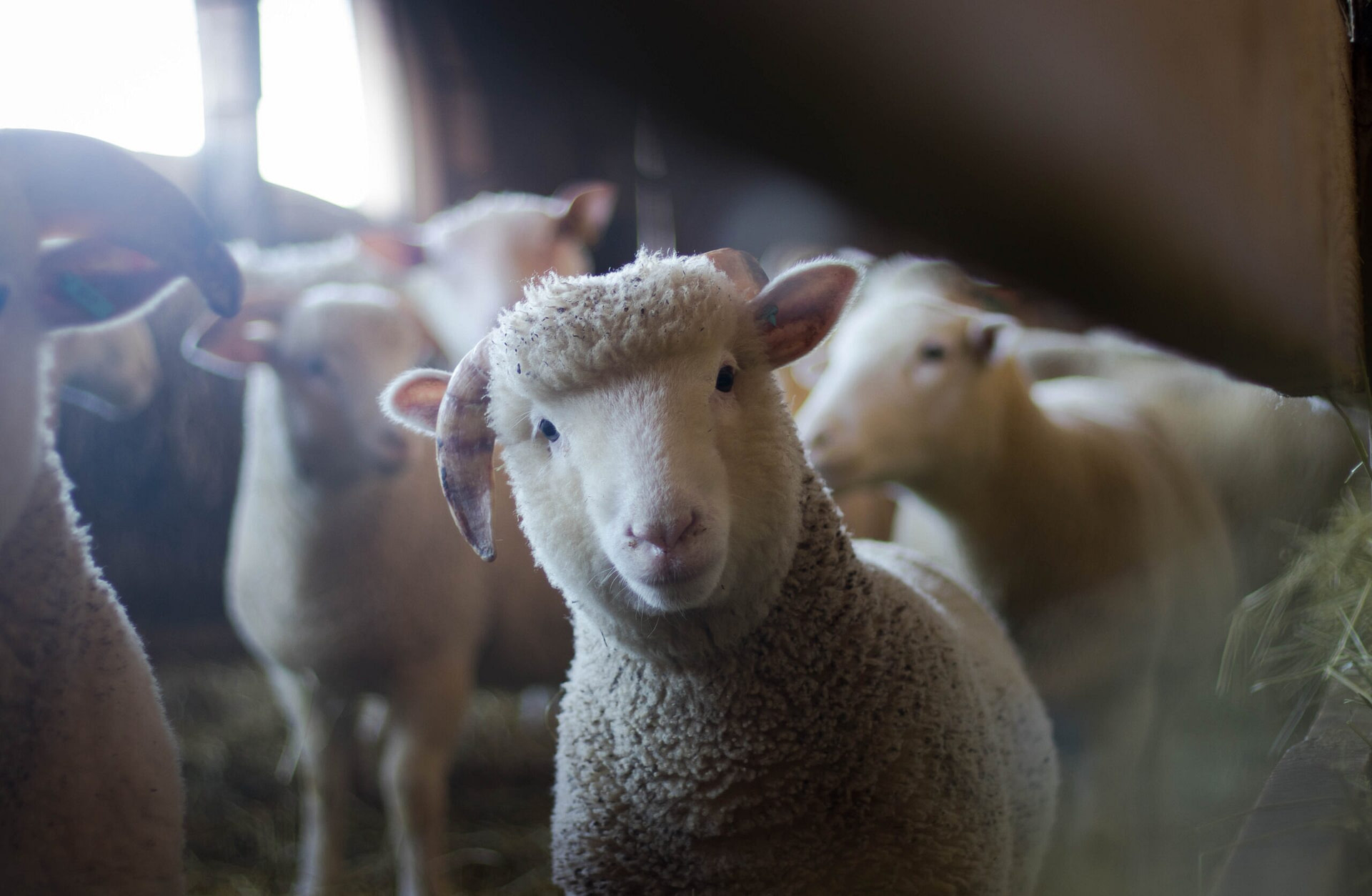Demand for the agriculture products increases while the Globe population grows. At this, people want to have fresh farm groceries fast and easy, preferably in one click. Marketplaces help to serve this need but there are still not so many convenient agrotech players on the market. We collected some stats on the agriculture industry, top websites and found out some best features for agriculture marketplaces which we think are the future of the farm eCommerce. You will get to know about the latest trends in the agrotech market that you can use in your future agrotech startup. With this information, you will be able to build a successful agrotech marketplace with less effort and budget.

The price for food is still rising worldwide meaning the supply cannot cover the demand and the need for quality farm food is the real driver to develop online farm stores and marketplaces in the rapidly growing field of agriculture eCommerce.
Agrotech Trends 2024: Evolving Agricultural Marketplaces
The agrotech landscape in 2024 continues to witness transformative trends, driven by the increasing demand for fresh, quality food accessible from any location. Here are the latest developments that cater to this demand:
- Smart farming and agricultural harvesting robots, AI and IoT devices to increase productivity and profitability, make it more efficient and sustainable. According to Statista, the global cost of smart agriculture will reach 34.1 billion U.S. dollars by 2026. The same source states that by 2023 the world agricultural IoT market size will be almost 30 billion U.S. dollars.
- Precision agriculture (technologies to help farmers control moisture levels and soil conditions). The world stats say that the compound annual growth rate of this market will increase to about 12 percent till 2025.
- GNPS tracking and livestock monitoring systems (all hardware, software and services to monitor cattle). In Latin America only, one of the world biggest agriculture suppliers, the value of this market is forecasted to reach 101 million U.S. dollars by 2025.
- Organic farming (a method to grow crops without fertilizers, growth hormones, pesticides, and antibiotics). In 2020, the sales growth of organic groceries in the US only was 12.8%.
- Vertical farming (use of vertical space to reduce the need for agricultural land). The market size is going to increase 4 times from 2020 to 2026 according to Statista.
- Regenerative Agriculture Marketplace: The emergence of regenerative agriculture marketplaces signifies a focus on sustainable practices that restore and enhance the environment. This trend emphasizes the holistic impact of agriculture on ecosystems.
- Food and Agriculture Marketplace: A dedicated marketplace for food and agriculture is gaining traction, streamlining the supply chain and facilitating seamless interactions between producers and consumers.
- B2B Agriculture Marketplace: Business-to-business (B2B) agriculture marketplaces are becoming integral, fostering efficient collaboration and trade among various stakeholders in the agricultural sector.
- E-Marketplace for Agriculture: The advent of electronic marketplaces for agriculture is enhancing accessibility and ease of transactions, contributing to the global digitization of the agricultural supply chain.
- Global Agriculture Marketplace: A broader trend is the establishment of global agriculture marketplaces, promoting international trade and collaboration in the agrotech sector on a global scale.
The latest technologies help enhance productivity and make farms more connected and intelligent. But without a convenient eCommerce platform, all these solutions won’t reach wide audience. Let’s examine top agriculture websites.
Agrotech leaders

In April 2022, Statista placed PhosAgro, the Russian fertilizer producer, at the top of agriculture companies worldwide. Its market cap was estimated as 12.86 billion U.S. dollars. The second leading agriculture company was named Olam, a Singapore-based venture, one of the largest suppliers of cocoa beans, coffee, cotton and rice to world markets. The company purchases products from 4.7 million farmers and resells them to 22,000 customers worldwide. Both holdings are not marketplaces but rather catalog-sites that showcase their products.
In march 2022, the SimilarWeb service enumerated five most visited websites in the Agriculture category. Here, nonghyup.com was ranked 1st most visited website in the agriculture category in March 2022. ruralking.com and oniflhor.fr took the 2nd and 3rd places on the list, while wur.nl is ranking 4th. Number five on the list is waslandandfarm.com. All these digital agro marketplaces exploit features that let them nail the customers’ attention and win the farm food sales war. Let’s find out what these features are.
Agriculture marketplace features
What can you as the ag marketplace owner offer to your vendors and costumes to attract both?
- First of all you should have a collaborative platform intended to build the farm business network, combine sales, marketing, logistics and help deliver fresh produce in a timely manner. The eCommerce platform should come with built-in shipping and payment services, handy sale and marketing tools. It is better if it allows its customization to add more services that will connect one or all trendy solutions you use in your agrotech business. Multi-Vendor perfectly suits this purpose.
- Vendor plans. The more options, the higher the plan. A small manufacturer cannot simultaneously cover several competencies well at once: production, logistics, document management, marketing, and product packaging. Offer them to take care of logistics, help with packaging and marketing, advise on the quality control system with a higher plan. The plan diversification is a powerful tool that is available for CS-Cart Multi-Vendor. Offer vendor plans tailored to the needs of B2B food wholesalers, considering factors such as order volume, delivery logistics, and marketing support.
- Tools for vendors should include vendor dashboard, sales reports, marketing tools, inventory import services.
- You need to have an ability to expand on other countries and create localized storefronts in them. It is possible with Multi-Vendor Ultimate. Enable B2B food wholesalers to expand their operations globally.
- Community to build a strong farming network so that vendors could support each other. Foster a community where farm equipment vendors and B2B food wholesalers can collaborate, share expertise, and support each other.
- Dedicated Marketplace for Farm Equipment:
- Create a specialized section within the agriculture marketplace that caters specifically to farm equipment vendors.
- Provide a platform for the buying and selling of a wide range of agricultural machinery and tools.
If you want to build an agriculture marketplace to promote local grown food based on CS-Cart Multi-Vendor, first consider our case “ChopLocal: Connecting Local Farmers with Customers on an Walmart-like Marketplace”.
There, we describe how we customized the default Multi-Vendor functionality to make the site more tailored to agric specific:
- Customized vendor panels
- Expanded Calendar functionality with pick-up dates and time slots as in Walmart
- Enabled search by location
We help in making the default platform features simple and user-friendly.

